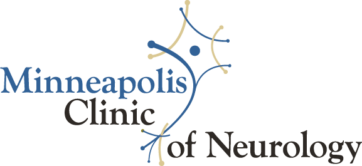Though involuntary movements in children are not uncommon, they can arouse a great deal of anxiety in parents, teachers and the child. Tics are a type of involuntary motor movements, which typically involve the head and neck; however, tics can also include a variety of noises and verbal expressions. Both motor and verbal tics can be variable in type and frequency, and they can change from one type to another, sometimes on a daily basis. Tics may run in families.
Tics are abnormal involuntary movements or sounds. We all have habits that could be called tics, but they occur only rarely and briefly. When these motor or verbal habits become excessive, a tic disorder may be present. Tics come and go, sometimes on a daily basis.
Tics – Different Types
- Motor Tics
- Eye blinking (this is probably one of the most common tics seen)
- Eye rolling (eyes may “dart” in various directions)
- Facial grimacing (nose wiggles, mouth movements)
- Hands (may “comb” hair repeatedly; bring hands to nose to “sniff”)
- Vocal Tics
- Throat clearing (very common)
- Intermittent “cough”, in absence of any illness
- “Sniffing” without signs of a cold
- Guttural sounds
- Humming
- Rarely, saying actual words or swearing
Tics usually begin over a period of time and may be ignored at first when they are very infrequent and mild. Rarely, they may start abruptly. In these circumstances, some acute change in the child’s health, such as a strep infection, might be noted. This may be of importance in rare cases due to an autoimmune reaction to common strep throat. Research studies are still active in this area.
In most children, no precipitating factors can be well defined. On occasion, a medication (such as stimulant medication for ADHD, or excessive use of caffeine products) may be implicated, which leads to an exacerbation of, but does not cause, the underlying tic disorder.
The diagnosis of Tourette’s Syndrome can be made when a child has changing motor and verbal tics that have been present for over a year (DSM-IV criteria). The diagnosis of this syndrome is still based upon the presence of clinical symptoms, but, in the future, there may be more specific genetic testing available. In many families, there is a positive history of tics in other relatives, or the presence of obsessive-compulsive disorder. The relationship of ADHD to Tourette’s syndrome is still debated, although many children have both problems. For many children with isolated tics, the diagnosis of Chronic Tic Disorder may be more appropriate than Tourette’s syndrome, especially when the family history is negative and the child has no other behavioral problems.
Many children with tics also have other behavior disorders, with ADHD and obsessive-compulsive disorder being most common. Some will develop anxiety symptoms or depression. These other problems must be considered in the child with social and academic difficulties.
Treatment of Tics and Tourette’s Syndrome
Many children with tics can be managed without medication. Parents, teachers and peers need to be understanding and supportive. Avoiding negative feedback is very important.
Some children seem to have more tics when under stress. There are ways to deal with the stress level without beginning medication. Diet may not matter except in some who need to avoid caffeine products. Regular sleep habits may be important in some cases.
If tics become excessive and cause increasing problems at home and/or school, a medication trial may be considered. Frequent, loud verbal tics are difficult to ignore and may need treatment, while a constant head jerking can lead, on occasion, to neck discomfort and headache. If medication is used, it should be used in the lowest effective dose. After a period of decreased tics, one needs to consider if the drug can be slowly decreased or discontinued. Many drugs are available and they all have potential side effects. Generally, it is best to try those with the least severe side effects first.
Many children will respond favorably to Clonidine, a blood pressure drug that must be increased very slowly to avoid sedation. Higher doses of Clonidine may also lower blood pressure and some rare cardiac effects have been reported. It can, however, be used effectively in small doses in many children, although usually it lasts only part of the day. Another variant, Tenex, may be helpful when Clonidine is not tolerated. Orap, another drug that is useful at times, is longer acting than Clonidine; however, it has potential side effects.
Haldol, the classical medication for Tourette’s syndrome, has the most side effects, especially with adverse behavioral changes or sedation; however, in small doses and increased slowly, it can be quite effective and well tolerated by most children. The medication should be discontinued periodically. Some physicians will try to use Risperidal, which in one of the “next-generations” of Haldol.
There is an ongoing search for more specific drugs with fewer side effects to treat tic disorders.
For further information about Tics and Tourette’s Syndrome, click on the following link:
